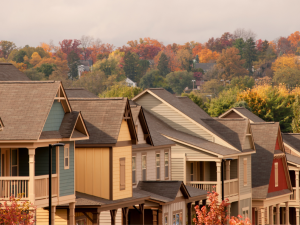Summer is upon us, and there’s no better way to celebrate the start of our favorite season than with a new issue of Coming Home magazine.
The theme of this edition is refresh—and we’ve crafted positive and energizing stories for you to enjoy. Within this issue, you’ll find lifestyle magazine articles for homeowners, including a fun word search, projects to revitalize your home, frozen treat recipes, a classic car guide, and so much more.
Take the Plunge: Explore the Benefits of Cold Plunging (Pg. 6)
A practice popularized by athletes and brave polar plungers, cold plunging is everywhere these days. From “cold plunge with me” videos on social media to new treatments offered at local spas and dedicated cryotherapy clinics, cold-water submersion isn’t going unnoticed. And maybe for good reason: exposing yourself to the cold, particularly after a long and strenuous workout, can only be good for you—right? In this article, we tell you everything to know about this ice-cool trend.
Batter Up: Everything You Need to Know About Baseball (Pg. 10)
Hey, batter, batter: swing! Your favorite pastime, baseball, is back. To impress your friends with all your on-field knowledge, we’re serving a cool refresher on the sport. We cover all the bases right here.
Summer Refresh: Must-Try Home Improvement Projects (Pg. 16)
Don’t spend all these daylight hours on wishful thinking; get up and go! Summer is the perfect opportunity to bring your home improvement dreams to life. Explore our list of fast—and fulfilling—projects you can knock out in one afternoon, one day, or just one weekend.
Chill Out: Frozen Recipes to Beat the Heat (Pg. 26)
Need to get a break from summer’s blazing heat? Enjoy one of our frozen recipes. In this article, we share recipes for:
-
- Mango Strawberry Popsicles
- Banana Splits on Sticks
- Rosemary-Aperol Floats
The Ride of a Lifetime: An Overview of the Best Classic Cars and Where to See Them (Pg. 30)
The purr of the engine and the beautiful craftsmanship of a classic car bring joy, nostalgia, awe, and appreciation to car enthusiasts and spectators alike. Modern relics of when life went slower and dreams came faster, classic vehicles bear witness to that bygone era and take us on a journey of discovery, innovation, and lasting spirit. Ride along as we cruise through the lifetime of automotives, highlighting their monumental impact at the turn of the 20th century and relevance in today’s future-focused world.
Stars & Stripes Standards: How to Properly Display the American Flag (Pg. 32)
The Fourth of July is just around the corner, and millions of people will fly flags to recognize the patriotic holiday. If you plan on touting this iconic symbol of freedom, remember there’s a right way to set up, display, and dispose of the flag. Explore important flag etiquette reminders for a successful celebration.
Ready for Anything: Five Emergency Preparedness Tips You Can Use Now (Pg. 34)
We’re all at risk for severe weather. Whether it’s torrential rain and flooding or extreme heat and wildfires, there’s likely some form of weather-related natural disaster that your area is familiar with. To keep yourself and your family safe, it makes sense to be prepared—especially when doing so is easy. Discover five simple things you can do now to prepare for an emergency.
Please enjoy this edition of Coming Home!


